Cerebral Palsy
Cerebral Palsy is categorized as a disorder of movement, muscle tone, and posture. It occurs when there is damage to the immature and developing brain, which can happen during or before birth. The condition may also develop within the child’s first 3 to 5 years of life. Patients who suffer from CP will have difficulties moving around in a coordinated and purposeful manner. It also affects your motor skills, such as breathing, control of bladder/bowels, eating, and even talking. While the exact trigger for the abnormality or disruption in a child’s brain development is unknown, there are a few factors that may cause these problems:
Genetic Mutations
Maternal Infections
Fetal Stroke
Infant Infections
Head Injury
Lack of Oxygen
These problems can lead to brain development issues, which can later lead to a CP diagnosis.
The different types of Cerebral Palsy:
There are four main types of CP, that can be based on movement disorders like stiff muscles, uncontrollable muscles, and poor balance/coordination. The different types of CP are defined as the following:
Spastic Cerebral Palsy
Most common type - affects 80% of people
People who suffer from this have stiff muscles, which results in spastic or awkward movements.
Dyskinetic Cerebral Palsy
Having trouble controlling hand, arm, feet, and leg movements.
Ataxic Cerebral Palsy
Having problems with balance and coordination.
Mixed Cerebral Palsy
People suffer from symptoms of more than one type of CP.
Most commonly from Spastic CP and Dyskinetic CP
Early Signs:
The signs of CP vary from person to person due to the different types of disabilities and levels of severity. The first sign you should be aware of though is if your child is not reaching certain motor or movement milestones during the early stages of development. Depending on age, there are a few other signs you should be looking out for. Let’s break them down:
For babies under the age of 6 months -
Their head lags when you pick them up while they are lying on their back.
The child often feels stiff or floppy.
When you are holding them in a cradled position, they overextend their back and neck. (The child may even push away from you)
When the child is picked up, their legs become stiff and they cross them.
For babies older than six months -
Inability to roll over in either direction.
Inability to bring their hands together
Inability to bring their hands to their mouth
Only reaches using one hand, while the other is kept in a fist.
For babies older than ten months -
When they crawl, they appear lopsided and only push off one hand/leg while the other side is left dangling.
They prefer to scoot on their butt or hop around using their knees rather than crawling.
Symptoms:
Now that we’ve gone over some of the warning signs to look out for let’s talk about the symptoms. Like early signs, symptoms can vary greatly. Here are a few movement and coordination problems that could be symptoms of CP:
Tremors or involuntary movements
Slow, twisting or squirming movements
Favoring one side of the body
Difficulty walking
Excessive drooling
Problems swallowing
Delays in speech development
Trouble speaking
Seizures
Difficulties with precise motions
How can Therapy Services of Greater NY help?
While there is no cure to CP, your child's way of living can always be improved. It’s important to seek treatment as soon as possible for any movement disorder. Once your child has been diagnosed, your doctor will devise a personalized plan that’ll help your child reach their full potential. Physical Therapy and Occupational Therapy are among the standard treatment options. Your doctor may also suggest, medicines, surgery, braces, or speech therapy depending on their needs. Luckily, at Therapy Services of Greater NY, we offer OT and PT services for children ages 0-21. Our staff can work with patients in many settings, including at home, in school, or even in our sensory integration gym.
If your child is experiencing any of the symptoms or early signs that we’ve discussed, or you want to get them checked out, contact Therapy Services of Greater New York today!
